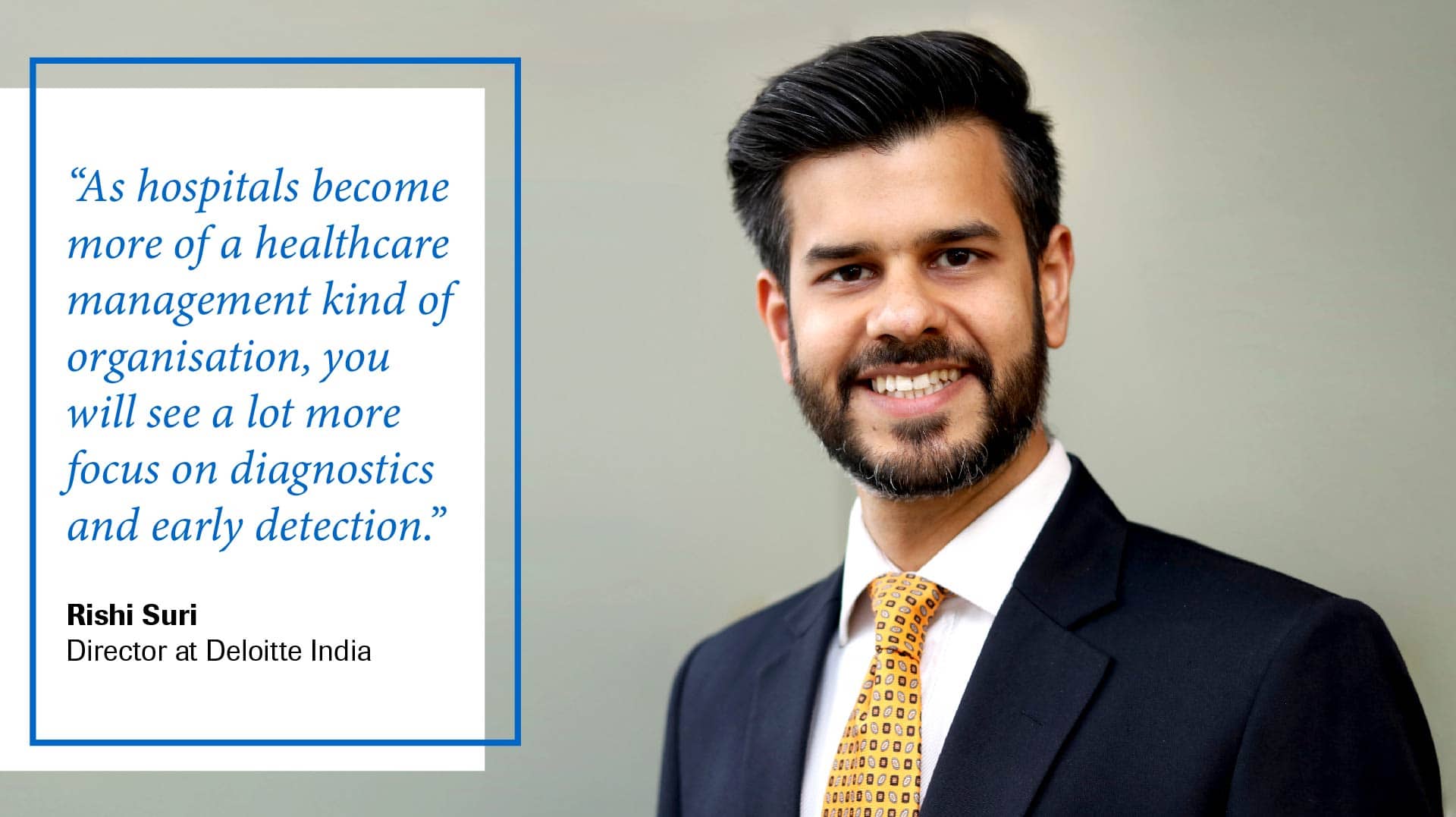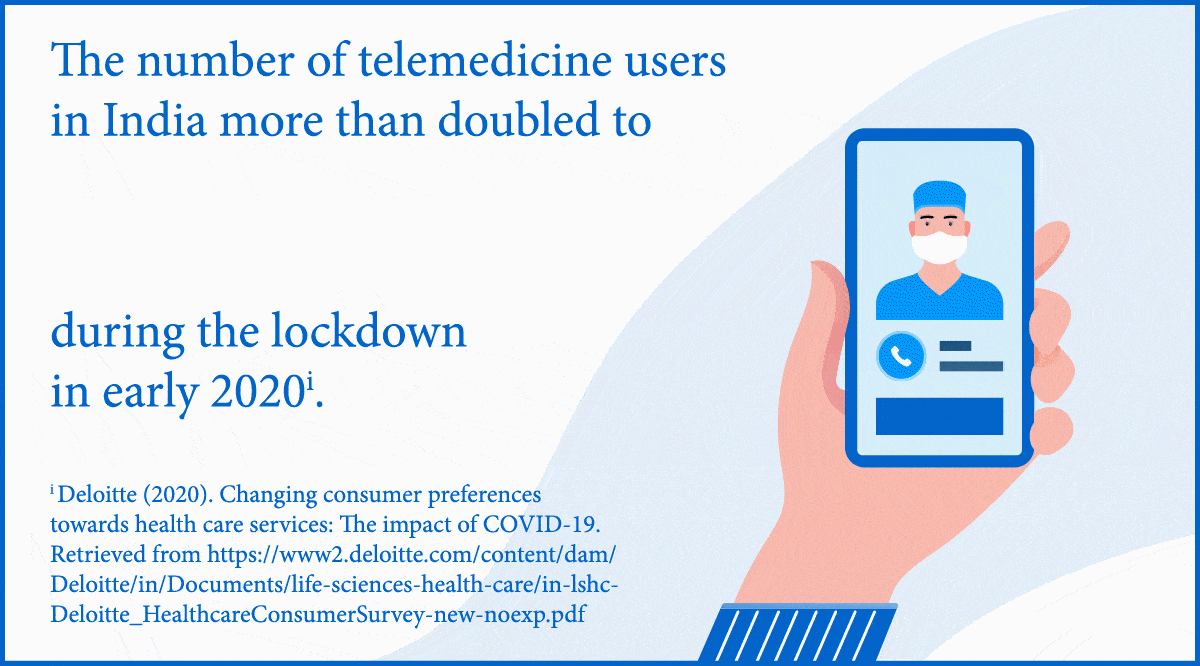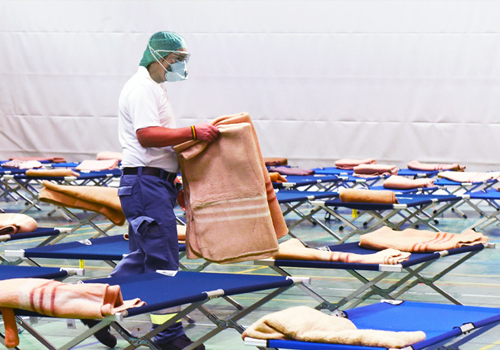When much was unknown about the novel coronavirus, and lockdown measures were first introduced, one of the most visible signs of change was the heightened focus on safety says Rishi Suri, Director at Deloitte India.
Many patients were afraid to visit hospitals, especially at the beginning of the pandemic, which led to a boom in home-based care and remote monitoring. In fact, a recent Deloitte study conducted in India found that the number of telemedicine users increased from 21 percent to 44 percent of the respondents during lockdown — a sizeable jump in a country of 1.3 billion2.
As consumers adjust to the new normal, such behavioural changes might be here to stay, creating a new era of consumer-driven healthcare.

Increased Trust and Shift to Digital Health Solutions
Despite the visible rise in the usage of telemedicine, the technology has actually been around for years. The first telemedicine initiative in India, for example, was set up nearly two decades ago3. Since then, India has gone through a digital revolution. Today, the country has over a half a billion internet users, with most of them connected via smartphones4.
“All the ingredients for telehealth and telemedicine were already in place, but there was a sense of wariness. Consumers and healthcare providers didn’t see any need to move away from the physical setting when it had proven to be an effective and profitable model. People just needed a push to change their behaviour and that is exactly what the recent pandemic provided,” explains Suri.

While the lack of consumer trust initially could be due to their limited exposure to such new modes of care, clinicians were also not fully convinced5.
According to Suri, clinicians once thought of telemedicine as a threat; believing that increasing access to medical advice virtually could lead to a decline in outpatient activities and create barriers to quality care.
Faced with lockdown measures and safety concerns raised by patients, however, clinicians had no choice but to shift outpatient activities online too. Anticipating the increased need for telemedicine by healthcare providers, the Medical Council of India released practice guidelines in March 20206. Such a move by the authorities was seen as an endorsement of digital health solutions.
COVID-19 has inadvertently helped build trust in these technologies, both among consumers and healthcare professionals. In the same Deloitte study, over 70 percent of respondents who had never used telemedicine services prior to the pandemic indicated an increase in willingness to try telemedicine going forward7.
Patients now recognise the convenience of remote care beyond just consultations – from having medicines delivered to follow ups in the management of chronic conditions – all from the comfort of their home8.
As consumer trust in home-based healthcare and digital tools continues to grow, they will seek more involvement in their healthcare decisions, in turn demanding more convenient and accessible health care solutions.
According to Deloitte, “Organisations that understand and act on how consumers would like to use digital health, telehealth, wearable monitoring and fitness devices, online resources, social media, and other technologies will likely be well-positioned to develop patient engagement strategies that help individuals make informed health care decisions9.”
In a sign of the times, private diagnostic laboratories in India have rolled out home collection services, where a trained medical professional visits the patient’s home to collect the swab or sample, which is then brought back to the lab for testing10.
Such a shift towards digital health solutions may also drive greater healthcare access as nearly 70 percent of the Indian population resides in rural areas, far from specialist doctors and advanced healthcare facilities11.
The Creation of One-stop Healthcare Portals
In India, hospitals have traditionally been at the heart of healthcare, Suri states. With the rise of digital tools and an increasing number of new players entering the ecosystem like telehealth clinics, online pharmacies and more, the role of hospitals has begun to change.
But this competition, says Suri, can benefit consumers and thus patients.
Learn more about digital technology in healthcare.
“I see hospitals waking up to this growing need and saying, ‘I want to be part of the patient’s entire healthcare journey, not just their treatment cycle’,” predicts Suri. This means that instead of competing with new players and only managing one touchpoint like surgery and post-operative care, hospitals would partner with new entrants to create a one-stop health care portal.
These portals would allow patients to easily access services across the entire health care spectrum – from wellness and prevention, screening and treatment through to monitoring. “When hospitals are seen as core to a person’s health, rather than a place to avoid unless you are ill, the care delivery model changes. As a result, hospitals will realise that early detection and wellness while saving them a lot of time and money, is also increasing their consumer/patient base,” he explains.
He cites the example of US-based integrated health maintenance organisations (HMOs), which promote the well-being of its customers through regular health check-ups, exercise and nutrition. The model works like this – people sign up to the service for a fee and the company is responsible for the management of their health, and any health-related treatment that they might need.
This means as long as members remain healthy, they are less likely to need expensive treatments or hospitalisation and the company can avoid having to bear these costs.
By being the “custodians of health”, these health service companies save substantial resources by focusing on early detection and wellness, and create a profitable business.
Suri explains that, “As hospitals move from episodic care towards health management, you will see a lot more focus on diagnostics and early detection.”
Read about personalised cancer diagnostics.
Disclaimer: the opinions expressed here are the personal views of Rishi Suri, and do not necessarily reflect Deloitte’s official position.
References:
1Kaka N, Madgavkar A, Kshirsagar A, Gupta R, Manyika J, Bahl K, Gupta S. (2019). Digital India: Technology to transform a connected nation. McKinsey Digital. Retrieved from https://www.mckinsey.com/business-functions/mckinsey-digital/our-insights/digital-india-technology-to-transform-a-connected-nation
2Sehgal C, Joshi A, Suri R. (2020). Changing consumer preferences towards health care services: The impact of COVID-19. Deloitte. Retrieved from https://www2.deloitte.com/content/dam/Deloitte/in/Documents/life-sciences-health-care/in-lshc-Deloitte_HealthcareConsumerSurvey-new-noexp.pdf
3Chellaiyan, V. G., Nirupama, A. Y., & Taneja, N. (2019). Telemedicine in India: Where do we stand? Journal of family medicine and primary care, 8(6), 1872–1876. https://doi.org/10.4103/jfmpc.jfmpc_264_19
4Digital India: Technology to transform a connected nation. Op. cit.
5Telemedicine in India: Where do we stand? Op. Cit
6Agarwal, N., Jain, P., Pathak, R., & Gupta, R. (2020). Telemedicine in India: A tool for transforming health care in the era of COVID-19 pandemic. Journal of education and health promotion, 9, 190. https://doi.org/10.4103/jehp.jehp_472_20
7Changing consumer preferences towards health care services. Op. cit.
8Ibid.
9Allen S, Hammett R, d Vettori E, Purdy L, Qun Z et al. (2019). 2019 Global health care outlook: shaping the future. Deloitte. Retrieved from https://www2.deloitte.com/content/dam/Deloitte/global/Documents/Life-Sciences-Health-Care/gx-lshc-hc-outlook-2019.pdf
10Government of India, Ministry of Health and Family Welfare. (2020). Guidelines for COVID-19 testing in private laboratories in India. Retrieved from https://www.mohfw.gov.in/pdf/NotificationofICMguidelinesforCOVID19testinginprivatelaboratoriesiIndia.pdf
11Chandramouli C. (2011). Census of India 2011: Rural distribution of population. Retrieved from https://censusindia.gov.in/2011-prov-results/paper2/data_files/india/Rural_Urban_2011.pdf














